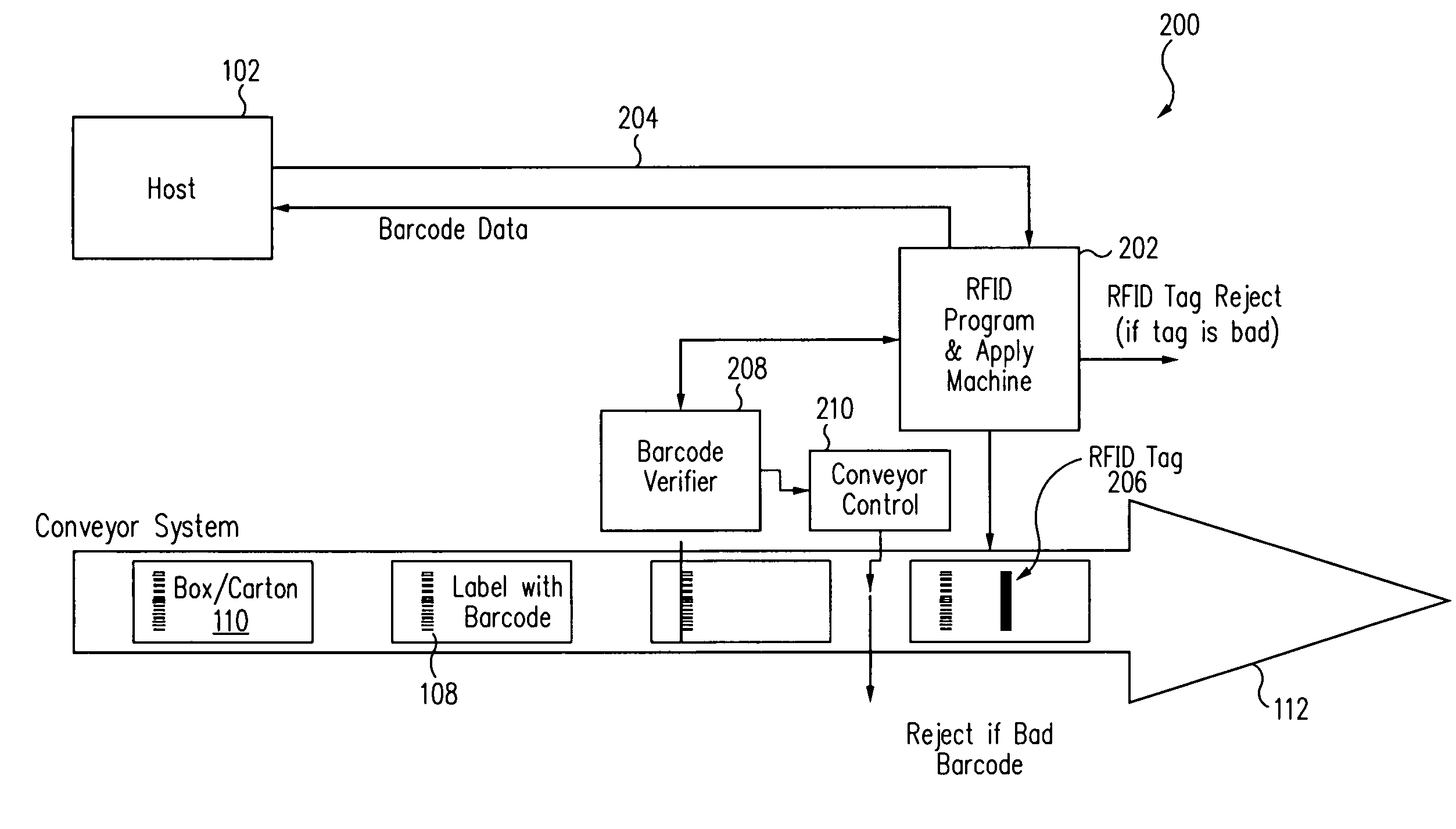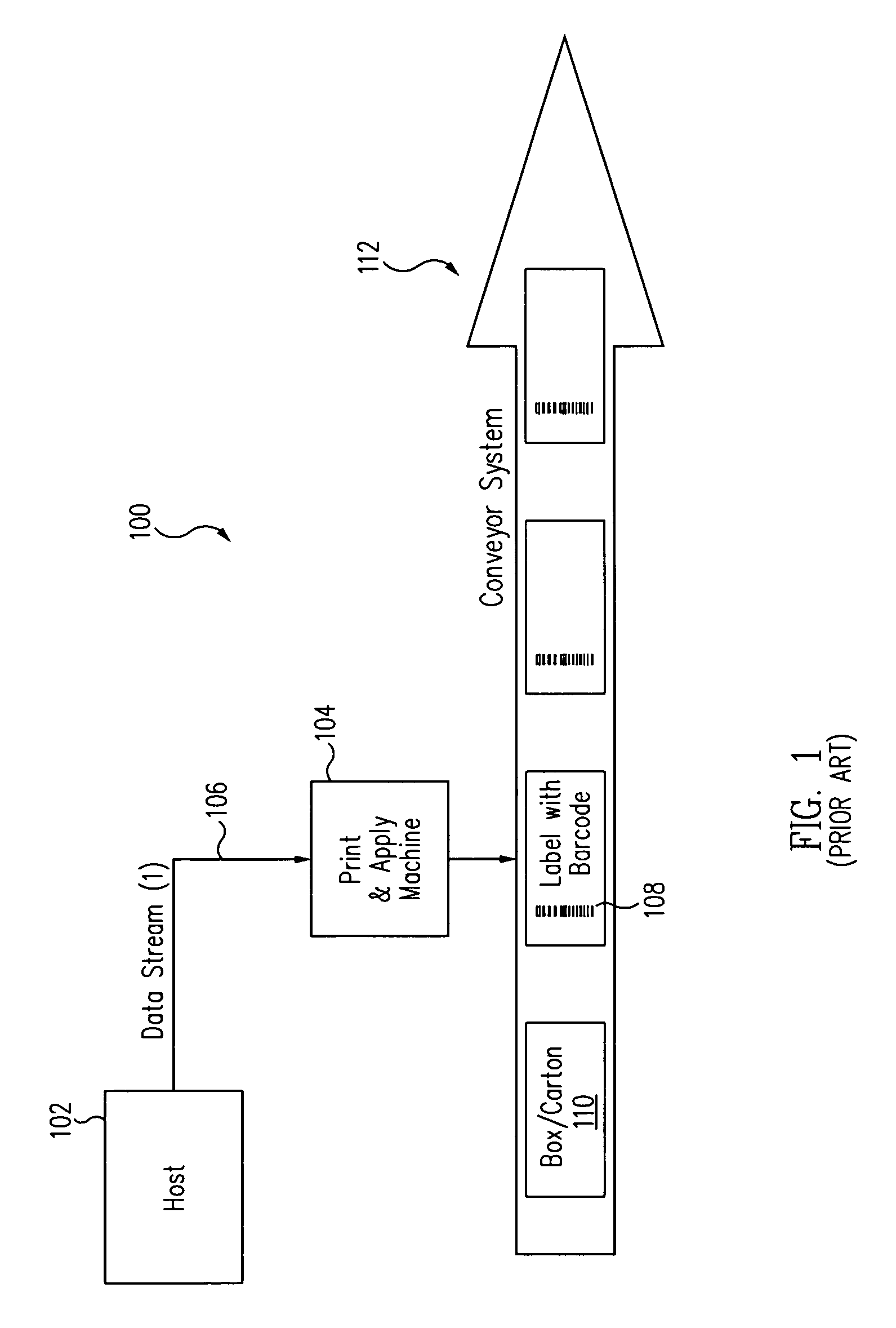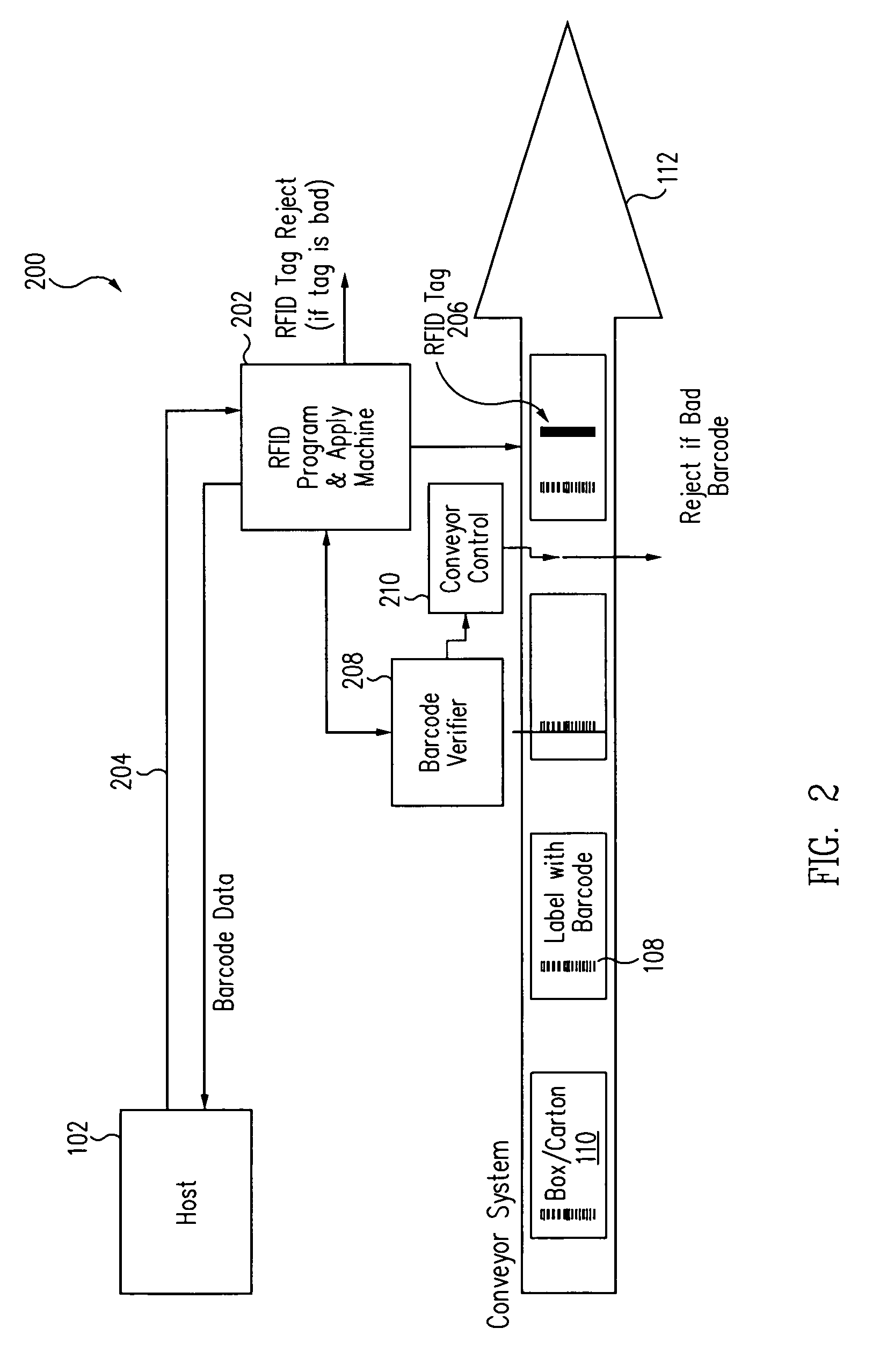RFID encoder and verifier
a technology of encoder and verifier, applied in the field of labeling systems, can solve the problems of limiting the range of optical readers, placing rfid labels, and many businesses or users not having suitable rfid readers to read rfid tags
- Summary
- Abstract
- Description
- Claims
- Application Information
AI Technical Summary
Benefits of technology
Problems solved by technology
Method used
Image
Examples
Embodiment Construction
[0025]FIG. 1 shows a block diagram of a conventional print and apply system 100 for applying optically readable or barcode labels. System 100 includes a host computer 102, which can be a conventional personal computer coupled to a local area network (LAN). A print and apply device 104 receives information via a data stream 106 from host computer 102 that includes a host application, typically specific to the system through an electrical and software interface. The electrical interface can be any suitable communication means, such as, but not limited to, a serial or parallel physical link, an Ethernet connection, or a wireless link. The data stream contains various commands, such as line, box, font, and barcode commands, for printing lines, boxes, text, barcodes, and other images. The data stream is transmitted to the printer portion of device 104 in specific languages to cause the printer to print an image on a label or other media.
[0026]Typically, each manufacturer uses a unique an...
PUM
 Login to View More
Login to View More Abstract
Description
Claims
Application Information
 Login to View More
Login to View More - R&D
- Intellectual Property
- Life Sciences
- Materials
- Tech Scout
- Unparalleled Data Quality
- Higher Quality Content
- 60% Fewer Hallucinations
Browse by: Latest US Patents, China's latest patents, Technical Efficacy Thesaurus, Application Domain, Technology Topic, Popular Technical Reports.
© 2025 PatSnap. All rights reserved.Legal|Privacy policy|Modern Slavery Act Transparency Statement|Sitemap|About US| Contact US: help@patsnap.com



